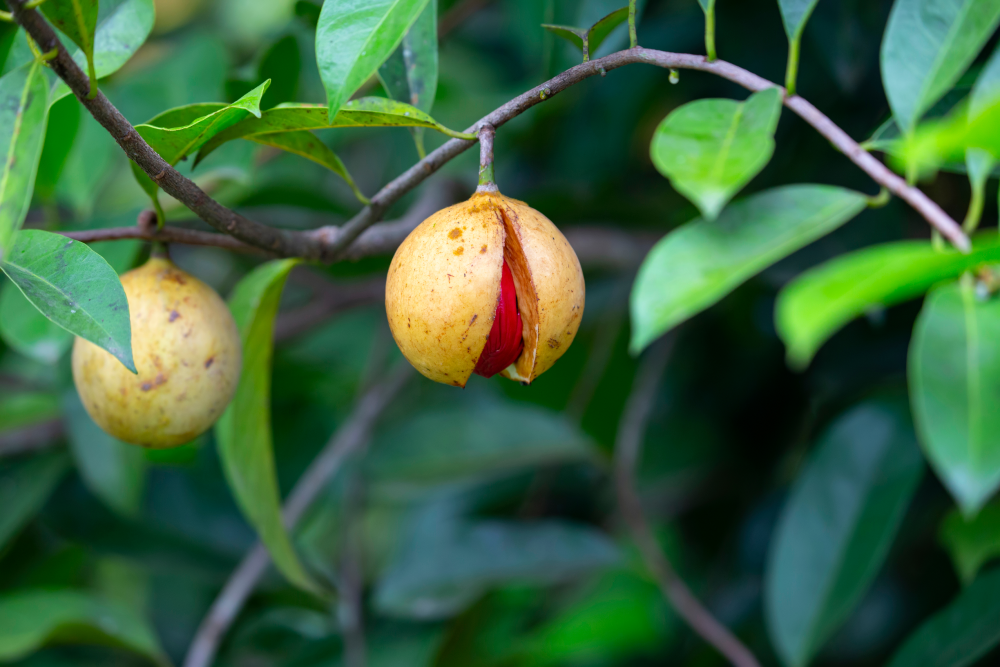Looking at nutmeg, brown ball that it is with a telltale title to boot, you might find yourself wondering: is nutmeg a nut? As is often the way with kitchen staples, there’s sometimes confusion over where nutmeg comes from and what it actually is. The good news for people with nut allergies is that no, nutmeg is not a nut, it’s something a whole lot spicier.
Nutmeg comes from the tropical evergreen tree Myristica fragrans that’s indigenous to the Maluku Islands of Indonesia, formerly known as the Spice Islands. The tree is very popular as the producer of nutmeg and its sister spice mace, which isn’t used in mace spray (that actually uses chloroacetophenone to achieve peak devastation).
M. fragrans grows yellowish-brown fruits about the size of a ping pong ball with a thick fleshy exterior. Tucked inside is a shiny seed wrapped in a thin red coat of aril. That shiny red aril is what becomes mace, while the brown ball inside becomes nutmeg.
This scarlet get-up is crucial to M. fragrans’ dispersal technique as birds feast on the aril before regurgitating the seed along with a helping hand of digestive slime. This unique set up for a successful growing tree is what made the initial propagation of these trees tricky, and has influenced the range where they can grow.

Is nutmeg a nut? No, it’s a seed. You’ll find it stuffed inside the fleshy fruit of the Myristica fragrans tree wrapped in a shiny red coating of aril. Image credit: anilkumart / Shutterstock.com
Nutmeg was jostled about by the battle of the spices that played out as European colonialists competed for flavors. Eventually it was moved out to Malaysia and Mauritius to level the monopoly, explains the University of Oxford, and is now grown across the tropics.
As for nutmeg as a spice, it’s long had a place in cooking as a way of enriching flavor (mashed potatoes have never been the same), but research has found that its medicinal uses endure in its area of origin. Its applications extend to the treatment of diarrhea, mouth sores, and insomnia.
A nutmeg “high” has been investigated in research, with some claiming that when ingested in large quantities it can cause hallucinogenic effects (coupled with tachycardia, hypertension, and delirium – yikes). It’s thought to be brought on by myristicin that causes a rush of norepinephrine, writes Inverse, and people have been reportedly using it in this way since the 1500s.
It was perhaps inevitable, then, that the spice would journey for centuries only to wind up as a #NutmegChallenge TikTok trend. It eventually got banned after nutmeg intoxication reportedly led to some users experiencing seizures, serving as a timely reminder to nutmeg responsibly.
The looks-like-a-nut, sounds-like-a-nut, not-a-nut spice might not pose a threat to certain allergy groups, but that doesn’t mean it won’t give your central nervous system a kick.
Source Link: Is Nutmeg A Nut? This Brown Ball Has Much Spicier Origins